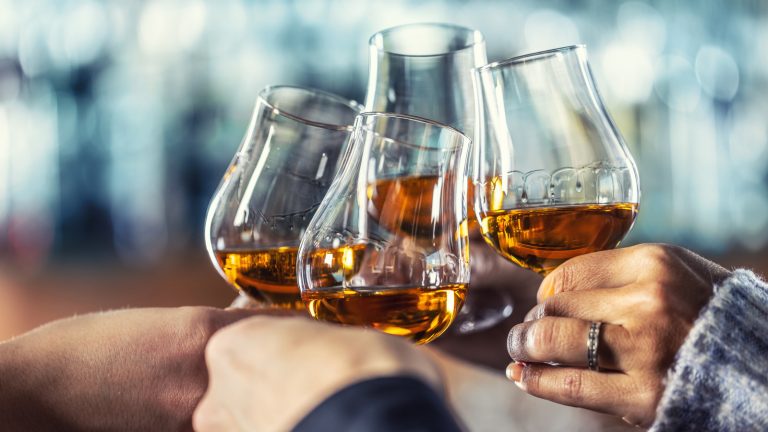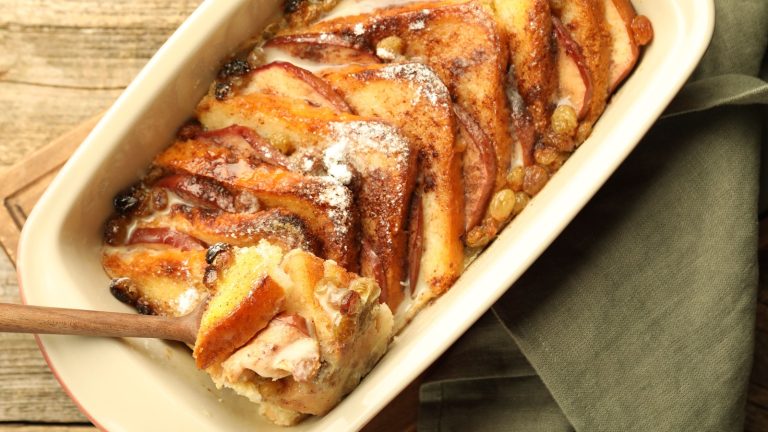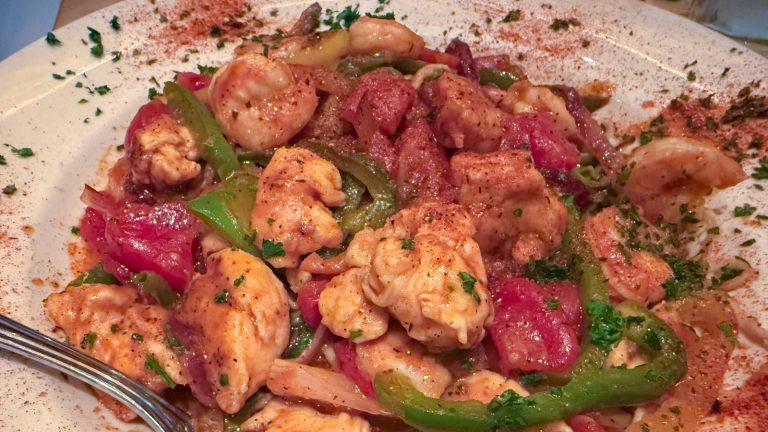We may receive a commission on purchases made from links.
There is a general curiosity about smoked cocktails among bar-goers. Perhaps it’s their looks, clad in an exotic, diaphanous cloud. Perhaps it’s the smell, like the dying embers of a bonfire in the woods. Or maybe it’s the layer of unexpected complexity that smoking adds to the drinks we have come to know and love.
Whatever it is that draws us to smoked cocktails, we’ve come to demystify the process. From our interview with Jarred Rozansky, former bartender and now drink expert behind Best Cocktails and the Best Cocktails Spirits Competition in NYC, we’ve put together a list of the 11 best smoked cocktails you can make at home.
From the equipment you need to some tips about technique and flavors, our article may not turn into professional bartenders, but it’ll definitely help set you above the rest of the hobbyists. Try them all and find your favorite smoky twist on an old, familiar cocktail.
What adding smoke does to a cocktail
Adding smoke to a drink may look like a trendy parlor trick, but it goes much further than that to altering the entire cocktail. According to Rozansky, smoke “adds another level of complexity… to the taste, the aura and the experience of the cocktail.”
Though it may seem tempting to do it all the time once you master the technique, not all drinks can, or should, be infused with smoke. More spirit-forward cocktails, such as Negronis, manhattans, and Old-fashioned-type drinks are the most compatible with smoky additions. Generally, rye, bourbon, and whiskeys pair better with smoke, though you may want to play with tequila and gin in specific configurations. Keep reading to learn more about what drinks work best with smoke.
Smoked lavender Old Fashioned
With a base of bourbon, orange bitters, and a twist from homemade lavender syrup, the lavender Old Fashioned has a pedigree that dates back to the 1800s, but adding a touch of smoke can make the drink feel decidedly fresh. “The smoke helps make the lavender pop; it adds more spice to it,” says Rozensky. Using culinary-grade lavender is extremely important, though, so don’t just pick the flowers from your backyard.
There are different wood chips you can use to bring up the taste and smell of the lavender. There are many different types of wood to use when smoking and grilling, and many of them are useful for smoking drinks as well. Rozensky recommends trying oak or cherry wood chips, as they help change the characteristics of the bourbon, making it taste a bit more complex.
Smoked Manhattan
If you’re a fan of Old-Fashioned-type drinks, then the classic Manhattan is undoubtedly a cocktail you should try smoking. With balanced flavors of rye and red vermouth alongside Angostura bitters and the bite of orange peel, it’s a bold, dry cocktail that is a classic for a reason.
So why would we mess with a classic by smoking it? Because smoke takes the natural flavors of the cocktail and accentuates them even further.
According to Rozensky, the smoke “will help elevate the bourbon to be woodsier,” driving the dryness even further. Depending on the type of chips you use, smoking can even help change the flavorings behind the drink, making it taste sweeter, rounder, or more acerbic. Just don’t forget to chill your glass and use good ice, as this smoked drink will need the dilution and cold of the presentation to feel even smoother.
Smoked Negroni
Taking a departure from the whiskey-based drinks we’ve looked at so far, we land at another classic — and this time, from Italy. Allegedly invented in 1919 in Florence by Count Camillo Negroni, the Negroni is an equal proportion combination of gin, vermouth, and Italian liqueur Campari.
The drink has a bright orange-red color and a smell that one recognizes a mile away, which makes it a perfect base for the addition of a layer of smoke. According to Rozansky, adding smoke to this homemade cocktail actually takes the already-strong drink into even stronger realms.
“It helps the Campari pop, makes the bitterness come out, and makes for a good mixture between bitterness and smoke,” says Rozansky. So, if you’re a fan of the original Negroni but love playing around with the layers, consider adding a bit of smoke to your glass.
Smoked lychee martini
The appletini may have had its heyday in the 1990s, but the lychee martini is a more recent floral addition to the fruit-flavored martini cocktail line. But just like bell bottoms and crop tops are having a comeback, so can this blast from the more recent past get another shot at the spotlight, especially with the addition of smoke?
We admit that smoking a lychee martini may not seem like a natural choice. This drink is sweet and smells of fresh fruit despite being made from canned lychee, which doesn’t necessarily seem like a natural choice when compared to the alcohol-forward drinks we’ve examined so far. But it’s precisely this unexpected profile that makes a smoked lychee martini a revelation.
According to Rozansky, adding smoke will help what otherwise feels like a basic cocktail become better. It will play up the dryness of the martini and make the drink smell like charred apple blossoms, which can be rather interesting. All in all, this is a drink to try if you’re adventurous and like the unexpected.
Smoked gin & tonic
A typical gin and tonic, or G&T as it is known, is nothing to brag about: a drink that is truly the sum of its parts, or in this case, the title. But when working with a fancified gin and tonic enhanced with atypical garnishes like juniper berries and lemon balm, only an even bolder treatment will do. That’s where the addition of smoke comes in.
The juniper berries in the drink echo the juniper in the gin itself, while the bouquet of lemon balm helps open the palette and adds a fresh, citrusy, and vegetal aroma that pairs well with the lime garnish. “Adding smoken will help bring another level to what otherwise is a very basic drink,” says Rozansky. He recommends using apple wood chips for a unique spin on a gin and tonic, enhancing the underlying fresh, fruity flavors.
Smoked orange margarita
Everyone knows tequila, and more accurately, everyone has likely had a tequila story they’d like to forget. But the addition of smoke can take a regular margarita and make it into an artisanally crafted drink to rival any mixology-centered bar.
Take, for example, Tasting Table’s orange-centric golden margarita. It’s already made special with a splash of freshly squeezed orange juice added to the base of tequila reposado and an orange liqueur like triple sec or Cointreau.
But what happens when you add some smoke to it? “It will make everything pop, you’ll have the lime juice coming out of it, you’ll taste it more, and it will bring out more smokiness to the tequila, making it taste more aged,” says Rozansky. Sounds pretty good to us.
Smoked Hurricane
The Hurricane, a New Orleans classic that combines light and dark rum with passion fruit syrup and citrus juices, might seem too honeyed for smoke at first glance. Yet that’s precisely why adding smoke might make the drink even more complex.
Think about what happens when you throw fruit like pineapple on the grill. The sugars caramelize, creating new scents and textures while heightening what is already there. So does smoke in this drink.
“It makes the passion fruit more flavorful,” explains Rozansky. The tropical sweetness of the passion fruit gets an unexpected counterpoint from the earthy smoke, creating a layer of flavor that the original drink, as delicious as it is, simply doesn’t have. Add smoke to a Hurricane, and what you’ll get is a cocktail that maintains its tiki vibes while gaining depth and character.
Smoked Paper Plane
Riffing on classics is one of a bartender’s favorite tricks, which is the entire basis for adding smoke to drinks. But what happens if you riff on a riff? A smoked paper plane and that is a vibe.
The Paper Plane, a modern classic created by bartender Sam Ross, combines equal parts bourbon, Aperol, Amaro Nonino, and lemon juice. It’s already a perfectly balanced drink with sweet, bitter, and sour notes playing together harmoniously.
Adding smoke to this delicate equation might seem risky, but according to Rozansky, it creates something magical. “Normally, an amaro is earthy, mushroomy, gingery. The smokiness brings more of a woodsy taste and presence to it. When you combine the amaro with the bourbon, the Aperol, and the smoke, it equals perfection.” The smoke acts as a connective tissue between the bourbon’s caramel notes and the amaro’s herbal complexity, making a great cocktail truly feel complete.
Smoked Winter Woods espresso martini
Just like the fruit-flavored martini, the espresso martini is another ’80s drink that has enjoyed a renaissance in recent years, with variations popping up on cocktail menus everywhere. The Winter Woods version, which incorporates seasonal spices alongside the traditional vodka, coffee liqueur, and espresso, becomes something truly special when smoke is added.
“It helps out with the coffee,” Rozansky notes. “It helps the coffee stand out more in the cocktail, makes the roast taste deeper and more caramelized.” The smoke pairs with and emphasizes the natural roasting process of the coffee beans, creating a deeper and more caramelized flavor and scent. It makes the drink feel more layered and indulgent, like having your morning cup of coffee in a local coffee roaster.
Smoked Gold Rush
Good things often come in small, simple packages, and the Gold Rush, with only three ingredients, is no exception. The holy trinity of bourbon, honey syrup, and lemon juice is essentially a whiskey sour, with honey instead of simple syrup and American bourbon whiskey in place of its Scottish cousin.
Many will say that a good Gold Rush is a beautifully minimalist drink that showcases its ingredients without fuss. Yet, according to Rozansky, “Smoke is the missing ingredient here. It’s like the sweet and sour concept; it goes from one extreme to the other and gives your palate a treat in the end.”
What makes this combination so successful is the way bitterness and smoke interact with honey. The natural floral notes in honey gain depth from the smoke, creating a complex, bittersweet flavor that plays beautifully against the bright acidity of the lemon. It’s this interplay that is at the core of another trick to elevate your Gold Rush cocktail, and it’s a perfect example of how smoke can bridge seemingly disparate flavors and meld them into one.
Smoked Boulevardier
For more proof that smoke and bourbon love each other, look no further than a smoked Boulevardier. The classic Boulevardier is often described as a whiskey negroni, combining bourbon or rye with sweet vermouth and Campari. It’s already a cocktail with considerable depth, but smoke takes it to another level entirely.
“The smoke helps pop the bitter,” Rozansky explains, “especially if you use cherry wood smoke; it changes the entire cocktail altogether.” Cherry wood has a natural sweetness that complements the bourbon while also enhancing the bitter complexity of the Campari.
The result is a cocktail that feels more integrated, with each component amplified rather than altered. Serve it in a lowball whiskey tumbler to really let the smoke permeate the drink and hit the palette as soon as you bring it to your face for the ultimate treat.
How to smoke a cocktail at home
Now that we’ve given you plenty of examples of the best smoked cocktails you can make at home, we hope that we’ve sufficiently drawn you to experiment with this exciting technique. But if fear is standing in the way of your desire to try, then we’re here to calm those fears, too.
Interestingly, the process of smoking a cocktail doesn’t differ much between professional and home environments. “There is no difference between home and a bar,” says Rozansky. “At home, it will take more trial and error, at a bar, you’re going for quick time and trying to do it as fast as you can, at home you can take your time because there is no one else to serve.”
His only note of caution? Remember that safety comes first. “Make sure you have a plan in case of a fire happening. Have salt nearby, or a wet rag, or a fire extinguisher.”
What equipment you need to smoke a cocktail?
The easiest way to start your smoking journey is to buy a smoker top or a smoker gun. Rozansky himself often uses a smoker top in drinks like his smoked Negroni. “You basically put wood chips in there, you use a torch, and then you see smoke coming out,” explains Rozansky. “You put it on top of your mixing glass before you start the stirring or even after the stirring.” A smoker gun is more common and is usually easier to use, but it also can cost more.
For a more complex approach without any fancy equipment, “you could also take a wood board and try to smoke the glass itself. You take rosemary or thyme, or another type of herb, or cinnamon, place it on a wooden board, light it on fire, and then put your glass upside down over the top of it to catch the smoke.”
Some people get creative with their methods, using smoked teas, blending burnt sugar, or adding liquid smoke to the drink. While direct smoking is best for flavor, Rozansky’s advice for the budding mixologist to “go with whatever is easiest for you, whatever you’re most comfortable doing, is the best.”
And finally, remember that perfection comes with practice. “Don’t be afraid if it doesn’t work the first time; it takes some trial and error to get to the right combination,” says Rozansky.





